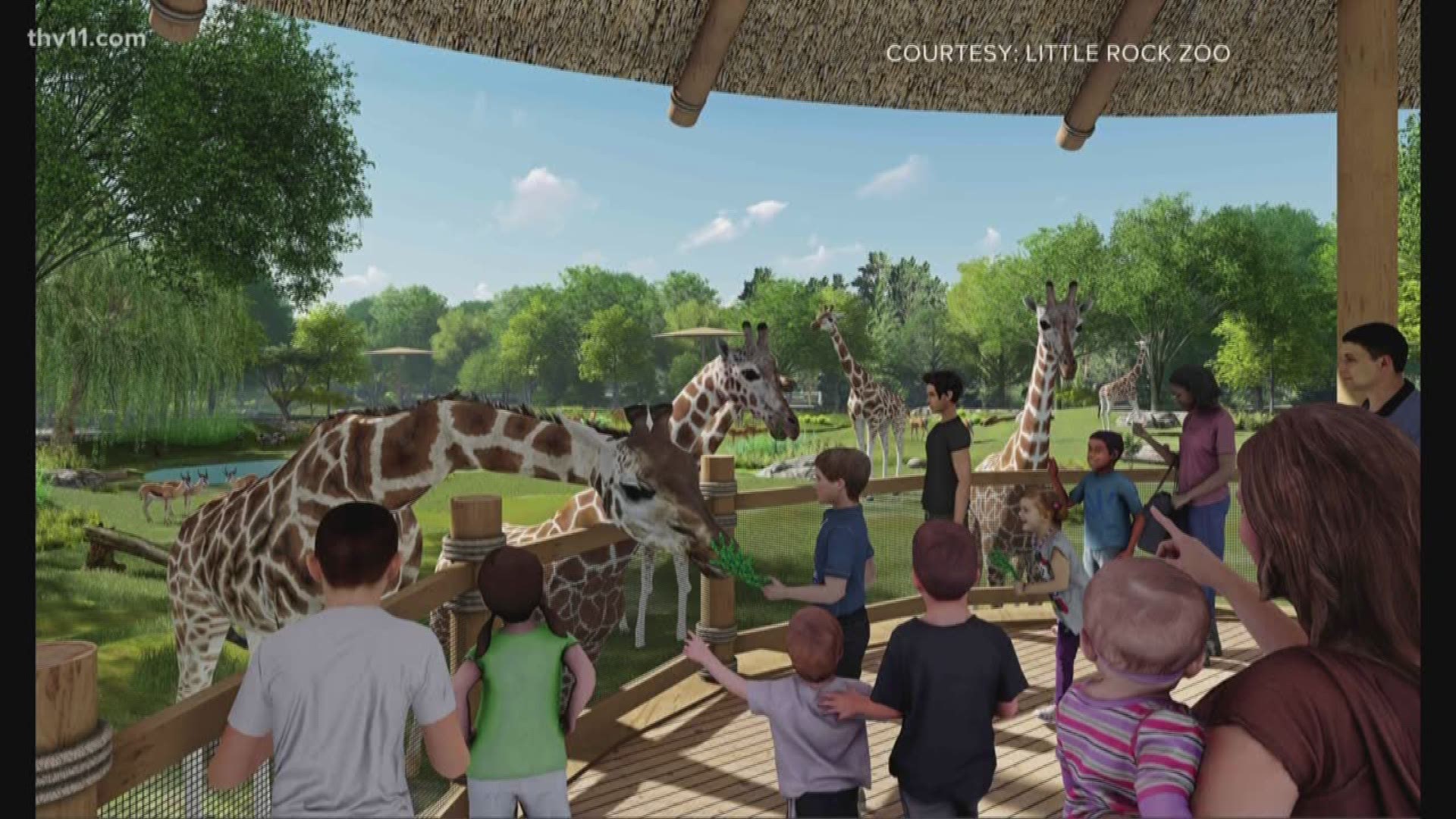LITTLE ROCK, Ark. — Little Rock voters could soon decide what kind of zoo they want the city to have.
Its leaders say a lack of funding is keeping visitors away and could even mean the end of its accreditation, and they believe a dedicated funding stream would not only remove its current constraints, but make it a more prominent and capable facility.
In a presentation to the Little Rock Board of Directors this week, the Little Rock Zoo’s task force said under-funding has prevented it from maintaining its buildings and grounds sufficiently and from hiring enough full-time staff members.
The final report prepared by the task force said that the zoo is under-funded by $1.2 to 1.75 million per year. Susan Altrui, the zoo’s director, said it has focused on caring for its animals at the expense of upkeep and improving the visitor experience.
“This is still a fantastic place and we still have a fantastic experience,” she said Wednesday, “but we can do better."
The Little Rock Zoo’s animals walked, swam, and flew around their habitats Wednesday in relative peace. Mayor Frank Scott Jr. ordered the zoo closed two days a week during the winter as a cost-reduction measure.
“It’s no secret that we’ve had cuts in funding for the zoo, and it’s no secret that we need to have a new plan for the zoo,” Altrui said.
The zoo’s new master plan calls for $90 million in improvements over the next decade.
“And Little Rock deserves that,” Altrui stated. “We should have the kind of zoo that our citizens want.”
Among the possible improvements, the zoo has renderings for a new exhibit that would allow visitors to feed giraffes and rhinoceroses; a new bear enclosure; and an exhibit that would place red wolves on one side of a partition and razorback hogs on the other, a nod to the teams from Arkansas State University and the University of Arkansas.
“I can’t tell you the number of times that we hear from kids and adults, alike, that they want us to get giraffes back,” Altrui stated. “But, in order for us to do that, it’s gonna take an investment in our zoo for us to do that.”
Altrui said a giraffe habitat would cost approximately $15 million.
“That often causes people a lot of shock when they hear a big number like that,” she added, “but when you look at the fact that we’re building a new arts center, and that arts center is going to cost us $120 million, it’s a large figure. Buildings, structures, those types of things—when you do them right—they cost a lot of money."
“And what we’re finding, though, too, is that the public is willing to make that investment. We recently conducted a poll, and it showed that the public would be willing to make that investment.”
The investment would come in the form of a special sales tax to benefit the zoo and the parks department. The zoo task force estimated that a half-cent tax would generate $25 million per year and a one-cent tax would generate $50 million. Altrui said she hoped the city would send the tax to voters in the next few months. If the campaign fails, a worst-case scenario could result in the zoo losing its accreditation if its facilities continue to deteriorate.
“If the zoo is not accredited, we wouldn’t be able to participate in those very valuable breeding programs with a species survival plan,” she said. “We wouldn’t be able to acquire a lot of those animals that people come to see and that are so valuable for us to have, such as orangutans, chimpanzees, African penguins, tigers. There are a lot of those species which are important species to have because of their valuable to conservation. But they’re also species that the public enjoys coming to view.”
Altrui said some of the zoo’s existing land would be re-purposed, but some of the new exhibits could go on four acres the zoo owns just to the east of its current footprint. It could also receive another 10 acres to the north; the city’s R3LR task force suggested giving three holes of the former War Memorial Golf Course to the zoo.
Even if it stays the same size, she believes the zoo can accomplish much more with a dedicated funding stream. She mentioned that Chicago’s Lincoln Park Zoo is less than 35 acres; if it uses the two additional parcels, the Little Rock Zoo would cover approximately 50 acres.
Altrui mentioned a recent study that showed any money spent on the zoo would have a 200 percent return on investment in economic impact. But aside from enriching nearby restaurants and shops, she said zoo enhancements would also benefit local schools.
“What we’re seeing is that, if we’re able to improve our zoo, we would be able to do things like offer free trips for all schoolchildren,” she mentioned. “We would be able to inject money into STEM education learning for schoolchildren that are here in the Little Rock school system and in schools in Little Rock.”
While construction crews continue to work on a new serval habitat and conservation research station on a cold, quiet day, Altrui envisions the Little Rock Zoo of the well-funded future.
“It’s a zoo that Little Rock can be proud of, it’s a zoo that our state can be proud of, and it’s the kind of zoo that our city needs,” she said.

